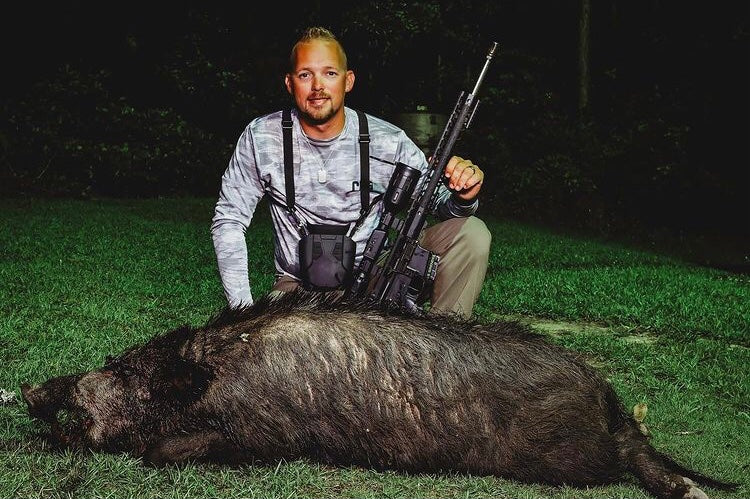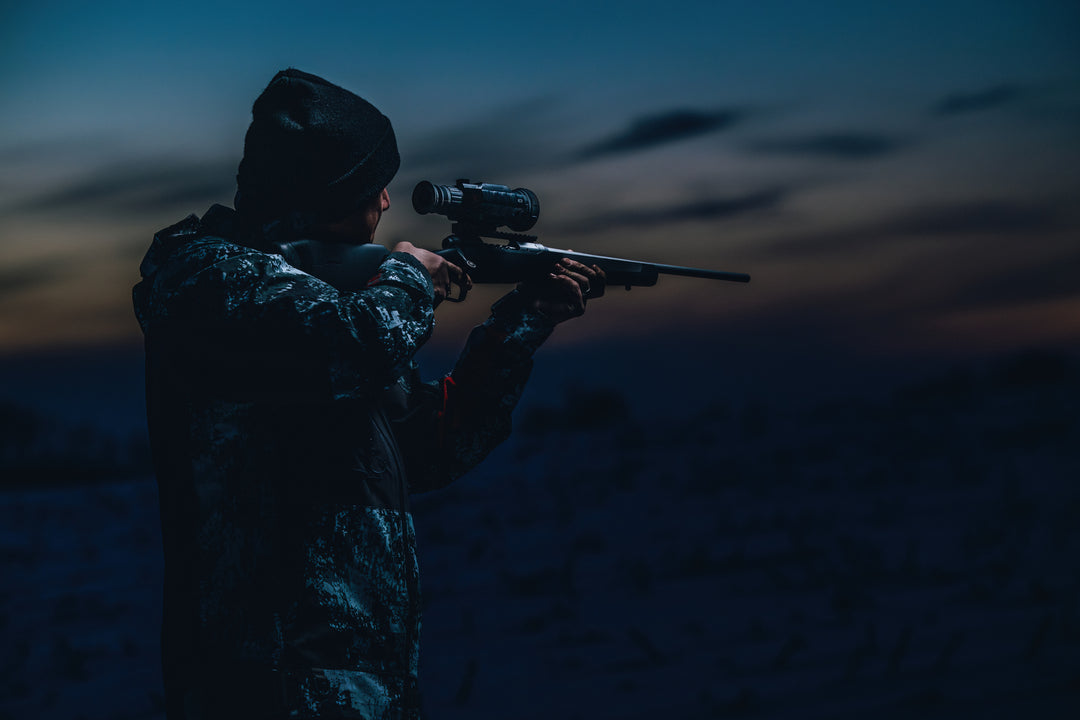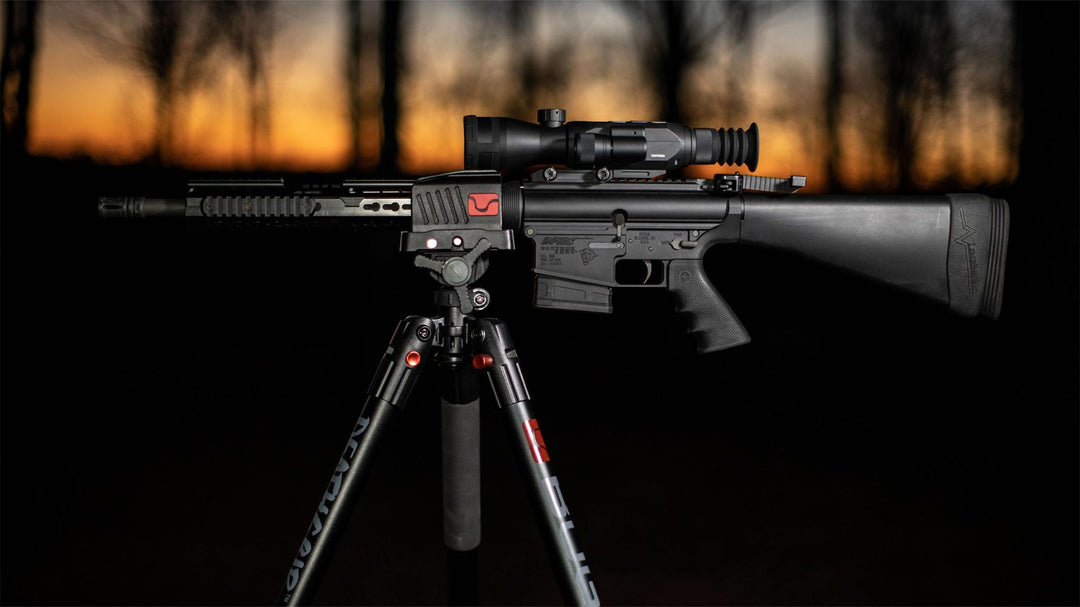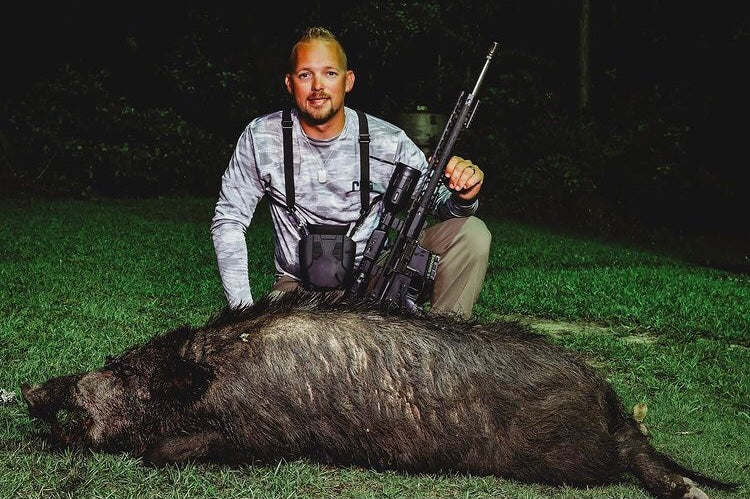Feral pigs and wild boars breed quickly and disperse widely wreaking havoc on crops and native wildlife. Because of this, many states have lax hog hunting regulations to encourage people to help curb the issue. Hogs are aggressive and dangerous game, making them an exciting and engaging hunt. Here are a few tips for your next hog hunt!

Secondly, rooting is a huge indicator that specifically a hog has been in the area. Not many other animals dig up dirt and vegetation like they do. If you find a mess of uprooted soil it is likely a hog has been in the area.
Thirdly, is the popular wild pig activity of wallowing. Often wild pigs find a body of water, such as a pond or creek, and dig up some mud to “wallow” in. Hogs do this to cool off and keep cool for an extended period as well as drive off pesky bugs. If you find a wallowing spot, chances are hogs are in the area.

How to Track Hogs
To hunt hogs, one must first be able to find them. Tracking is extremely important on a hog hunt and luckily there are a few tell-tale signs that hogs have been in an area. First, are the hog’s tracks. Tracks are often the most sought-after sign of an animal’s presence. With hogs, their tracks resemble a deer’s but are larger and rounder.Secondly, rooting is a huge indicator that specifically a hog has been in the area. Not many other animals dig up dirt and vegetation like they do. If you find a mess of uprooted soil it is likely a hog has been in the area.
Thirdly, is the popular wild pig activity of wallowing. Often wild pigs find a body of water, such as a pond or creek, and dig up some mud to “wallow” in. Hogs do this to cool off and keep cool for an extended period as well as drive off pesky bugs. If you find a wallowing spot, chances are hogs are in the area.
Use Calls
Another beneficial tool when hunting hogs is the use of different calls. Because hogs are notoriously aggressive, a predator call may be helpful to draw them out by challenging them. A distress call may also be just as effective at drawing a boar out. These animals are defensive of their young and will come to their aid out in the open if they hear the call. Whichever you choose both will be extremely helpful on your next hog hunt.
Hunting at Night
Whether they are adapting to hunting pressures or avoiding the heat, hogs can switch to a nocturnal schedule. This nocturnal activity means the best time for a hog hunt is often at night. Before you take out the night vision and thermal optics be sure to scout out the hunting area during the day first. You will want to take not of the terrain, dips in the ground, stumps, big rocks, and landmarks. Remembering the locations of these things will help you keep your footing during the hog hunt. With the tips outlined above, you should be in good shape for a hog hunt!









